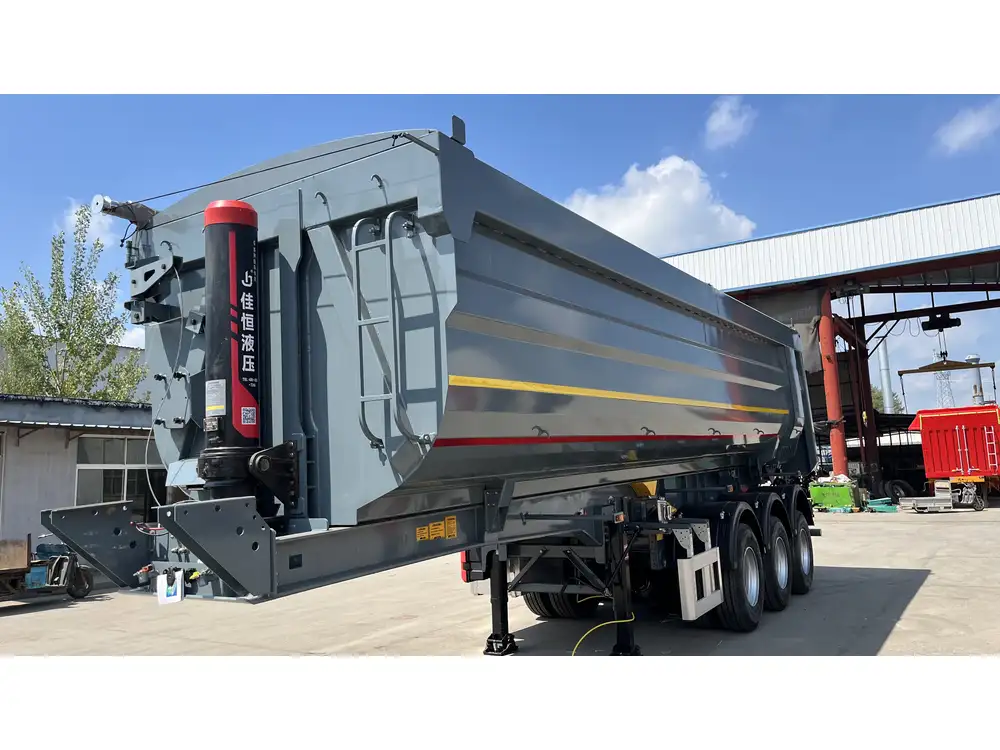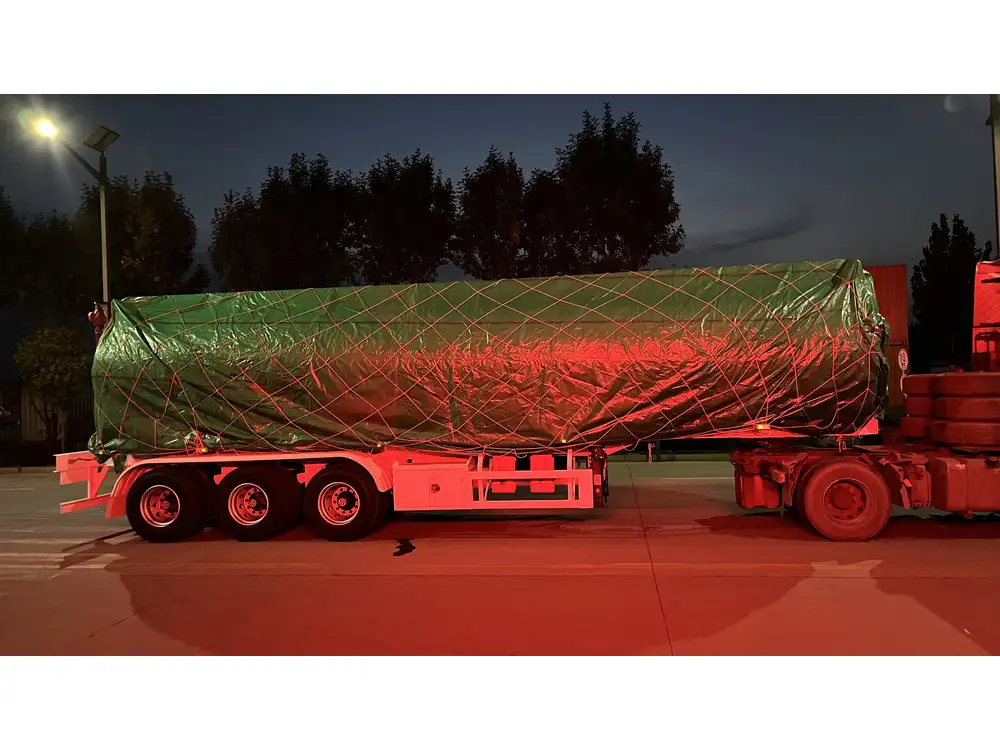When it comes to dump trailers, one of the most critical parameters to understand is the deck height. But where exactly is this measurement taken, and why does it matter? This extensive guide will delve into the specifics of dump trailer deck height, its implications on performance, compatibility with trucks, and considerations for buyers and operators alike.
What is Deck Height?
Deck height refers to the distance between the ground and the trailer’s deck, which is the flat surface where materials are loaded. This measurement is critical for various operational and functional reasons, whether you are hauling soil, gravel, or construction debris. The deck height affects the trailer’s loading capacity, ease of loading, and overall maneuverability.
Importance of Deck Height
Loading Efficiency: A lower deck height can facilitate easier loading and unloading of materials, particularly for heavy equipment that requires stable ground clearance.
Stability: The deck height plays a key role in the overall stability of the trailer while in operation, affecting how weight is distributed.
Compatibility with Equipment: If the deck height is not aligned with the specifications of the loading equipment, it can create safety hazards and inefficiencies.

How to Measure Deck Height
To accurately determine the deck height of a dump trailer, follow these steps:
Park the Trailer on Level Ground: Make sure the trailer is parked on a flat, even surface to eliminate any discrepancies in height due to sloping ground.
Use a Measuring Tape: Extend a measuring tape vertically from the ground to the top of the trailer’s deck. Ensure that the measuring tape is perpendicular to the ground for an accurate reading.
Record the Measurement: The measurement you obtain is the deck height. Keep in mind that different trailers may have varying deck heights depending on their design and intended use.
Visual Representation of Deck Height Measurement
| Step | Description |
|---|---|
| 1. Park on Level Ground | Ensures accuracy in measurement |
| 2. Use Measuring Tape | Essential tool for obtaining height |
| 3. Record Height | Document your findings for future reference |
Common Deck Heights for Dump Trailers
Dump trailers come in various styles and sizes, each with specific deck heights that cater to different hauling needs. Here, we categorize them:

Standard Height
- Typical Measurement: 30–36 inches from the ground.
- Use Case: Ideal for general construction and landscaping applications where moderate loading and unloading heights are required.
Low Deck Height
- Typical Measurement: 24–30 inches from the ground.
- Use Case: Best suited for heavy equipment transportation and efficient loading of bulk materials, minimizing the risk of tipping.
High Deck Height
- Typical Measurement: 36–44 inches from the ground.
- Use Case: Typically used for trailers requiring extra clearance for larger loads but may reduce loading efficiency.
| Type of Dump Trailer | Typical Deck Height | Best Use Case |
|---|---|---|
| Standard | 30–36 inches | Construction, landscaping |
| Low | 24–30 inches | Heavy equipment transport |
| High | 36–44 inches | Larger load clearance |

Factors Affecting Deck Height
Understanding the components that influence deck height can aid in selecting the right dump trailer for your specific needs. Here are the primary factors:
1. Axle Configuration
The number and arrangement of axles significantly influence the trailer’s overall height. Trailers with tandem axles may sit higher than those with single axles due to the need for additional clearance for heavier loads.
2. Suspension Type
- Leaf Spring Suspension: Generally, this type offers a higher deck height compared to air suspension systems.
- Air Suspension: While it can be adjusted for a lower ride height, it might not provide the same level of stability when fully loaded.

3. Tires and Wheels
The size of the tires can impact deck height. Larger tires usually raise the trailer’s overall height, affecting the loading dynamics. Conversely, smaller tires will lower the deck height, making loading easier.
4. Frame Design
Different frame designs also alter the height. For instance, a “low-boy” trailer is specifically engineered to have a low deck height, facilitating easier loading of heavy equipment.
| Factor | Description |
|---|---|
| Axle Configuration | Impacts trailer height and load stability |
| Suspension Type | Determines overall height adjustment for loading heavy items |
| Tire and Wheel Size | Affects the height from the ground to the deck |
| Frame Design | Specific engineering for tailored height adjustments |
Implications of Inadequate Deck Height
An improperly selected deck height can lead to significant problems, including:
Increased Loading Time: If the deck height is too high for the loading equipment, it may lead to inefficient loading practices, requiring additional equipment or labor.
Safety Hazards: If the trailer is not stable due to incorrect dimensions, it can tip over during loading or unloading, posing risks to operators and surrounding personnel.
Reduced Payload Capacity: A mismatch in deck height can also limit the full use of trailer space, reducing overall efficiency and profitability.

Buying Tips for Dump Trailers
When selecting a dump trailer, various aspects of deck height and other characteristics should be carefully considered:
1. Analyze Your Needs
What will be the primary use of the dump trailer? Will it involve transporting heavy machinery, or will it be used for lighter materials? Identifying this will guide your decision-making.
2. Evaluate Vehicle Compatibility
Ensure that your towing vehicle can handle the specific deck height and loading requirements of the dump trailer. Incompatibilities can lead to performance and safety issues.

3. Consider Terrain and Job Site
If your job sites consist of varying terrains, a low deck height may be more advantageous for loading efficiency on uneven ground.
4. Check Regulations
Research local regulations regarding trailer height restrictions and how it could impact your operations.
| Buying Tips | Consideration |
|---|---|
| Analyze Your Needs | Identify the primary use to guide trailer selection |
| Evaluate Vehicle Compatibility | Ensure your truck can tow the chosen trailer comfortably |
| Consider Terrain and Job Site | Match the trailer’s features with the types of locations you’ll visit |
| Check Regulations | Stay informed about local height restrictions and regulations |
FAQs on Dump Trailer Deck Height
Q1: What standards exist for dump trailer deck height?
A: There are no universal standards; however, manufacturers often provide specifications that cater to common industry needs.
Q2: How does deck height affect the center of gravity?
A: A lower deck height can lower the center of gravity, improving stability during transit and minimizing the risk of tipping.
Q3: Can deck height be modified?
A: Alterations can be made, but any changes should comply with safety standards and manufacturer’s recommendations.
Q4: What is the best deck height for off-road use?
A: For off-road conditions, a lower deck height is often more beneficial for efficient loading and stability.

Conclusion
Understanding dump trailer deck height is essential for effectively using this crucial piece of equipment. The right deck height influences loading efficiency, stability, compatibility with trucks, and even safety during operations. By carefully assessing your specific needs, vehicle compatibility, and operational scenarios, you can make an informed choice that maximizes the performance of your dump trailer.
To ensure successful operations, keep this guide as a resource for evaluating deck height and making your next dump trailer investment a worthwhile one. Whether you opt for a standard, low, or high deck, always prioritize safety and functionality in your selection process.



